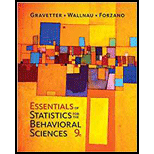
Concept explainers
In a classic study in the area of problem solving Katona (1940) compared the effectiveness of two methods of instruction. One group of participants was shown the exact, step-by-step procedure for solving a problem and was required to memorize the solution. Participants in a second group were encouraged to study the problem and find the solution on their own. They were given helpful hints and clues, but the exact solution was never explained. The study included the problem in the following figure showing a pattern of five squares made of match sticks. The problem is to change the pattern into exactly four squares by moving only three matches. (All matches must be used, none can be removed, and all the squares must be the same size.) After three weeks, both groups returned to be tested again. The two groups did equally well on the matchstick problem they had learned curlier. But when they were given new problems (similar to the matchstick problem), the memorization group had much lower scores than the group who explored and found the solution on their own. The following data demonstrate this result.

- a. Is there a significant difference in performance on new problems for these two groups? Use a two-tailed test with α = .05.
- b. Construct a 90% confidence
interval to estimate the size of the mean difference.
Want to see the full answer?
Check out a sample textbook solution
Chapter 10 Solutions
Essentials of Statistics for The Behavioral Sciences (MindTap Course List)
 Algebra: Structure And Method, Book 1AlgebraISBN:9780395977224Author:Richard G. Brown, Mary P. Dolciani, Robert H. Sorgenfrey, William L. ColePublisher:McDougal Littell
Algebra: Structure And Method, Book 1AlgebraISBN:9780395977224Author:Richard G. Brown, Mary P. Dolciani, Robert H. Sorgenfrey, William L. ColePublisher:McDougal Littell Algebra for College StudentsAlgebraISBN:9781285195780Author:Jerome E. Kaufmann, Karen L. SchwittersPublisher:Cengage Learning
Algebra for College StudentsAlgebraISBN:9781285195780Author:Jerome E. Kaufmann, Karen L. SchwittersPublisher:Cengage Learning Intermediate AlgebraAlgebraISBN:9781285195728Author:Jerome E. Kaufmann, Karen L. SchwittersPublisher:Cengage Learning
Intermediate AlgebraAlgebraISBN:9781285195728Author:Jerome E. Kaufmann, Karen L. SchwittersPublisher:Cengage Learning- Algebra & Trigonometry with Analytic GeometryAlgebraISBN:9781133382119Author:SwokowskiPublisher:Cengage



